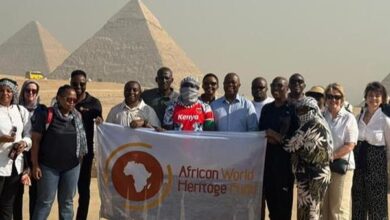
Archaeological sites in Alexandria are facing ruin, with renovation projects by the Antiquities Ministry covering 13 ancient Islamic, Coptic and Jewish monuments stalled due to a shortfall in funding that stretches back many years.
Eighty percent of the province’s sites, meanwhile, have not been touched by conservators for tens of years.
Archaeologists have told Al-Masry Al-Youm that the whole history of Alexandria is threatened with extinction, especially since the only UNESCO-registered ancient Coptic site, the Abu Mina archaeological zone, may be removed from the organization’s world heritage record due to high levels of underground water at the 600-feddan site.
Among those concerned is Antiquities Ministry official Mohamed Ali Saeed, the former director of Alexandria’s antiquities. He told Al-Masry Al-Youm that many ancient Islamic sites are near collapse, either due to a lack of renovation work or work being interrupted.
Enumerating the endangered structures, Saeed listed the Shorbagy Mosque, the Terbana Mosque, the Haqqania courthouse, the Ptolemaic Wall, the old towers, the cisterns of Ibn al-Nabih, Ibn Battouta Ismail and Ingy Hanem, as well as the entire Abu Mina Coptic site. He said that while renovations at some sites have been halted for at least six years, others have not seen conservators for more than 20 years.
Saeed urged “immediate intervention" by the ministry to save the historic sites, warning that weather conditions, most notably seasonal winter storms, represent a serious threat to them.
In his warning, Saeed gave special attention to the Abu Mina area, which, he explained, is Egypt’s only Coptic site listed by UNESCO. He said groundwater levels at Abu Mina have reached 5.5 meters, submerging the ancient tomb of Saint Mar Mina.
Ahmed Abdel Fattah, another expert and a member of the ministry’s permanent antiquities panel, warned of rising groundwater levels at the ancient Ptolemaic and Greek tombs of Mostafa Kamel, Shatbi and Anfoushi, where walls and floors are being gradually eroded. He said the structures should be prioritized for renovation, especially due to their exposure to high humidity levels resulting from proximity to the sea.
Abdel Fattah pointed to the endangered ancient Ptolemaic cemeteries of Alabaster and Wardian near the seaport, which he identified as two of the most historical sites in the Alexandria area. The Ptolemaic cemeteries of Souq al-Gomaa, are also suffering “severe deterioration” according to Abdel Fattah.
“They fall between the tramway and low-income housing, surrounded by piles of garbage on all sides,” he noted.
Speaking from Abu Mina, the region’s antiquities official, Father Tedaous Avamina, said that in 2005 the Antiquities Ministry embarked on a LE50 million scheme, sponsored by UNESCO and the government, to reduce groundwater levels at the site. He explained that, though the project was completed in 2010, political upheaval and economic hardship meant there was not enough money for periodic maintenance of the water drainage equipment.
Political instability was also responsible for stalled renovations at other sites. An official source at the ministry’s engineering administration said nearly LE57 million had been earmarked for renovations at the Terbana and Shorbagi mosques since 2009. The official said that, while the first phase of renovations was concluded before the 2011 uprising, later phases were halted due to political upheaval.
According to the official, four other schemes are planned for the same sites, including the renovation of the ancient cemeteries and draining groundwater there. However, work cannot begin until the money has been found.
Edited translation from Al-Masry Al-Youm




